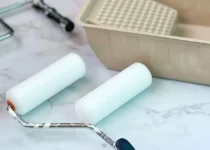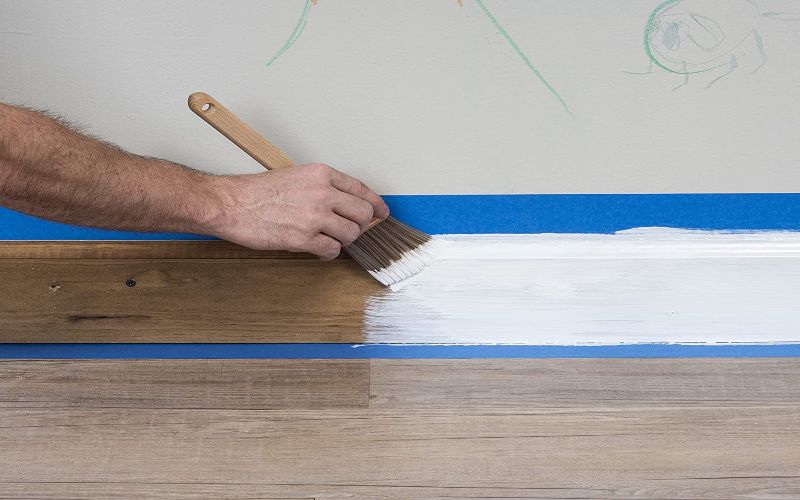Is acrylic paint safe for baby footprint
Artists frequently use acrylic paint because it is simple to blend and manipulate, but if you think it is just paint, would you be comfortable applying it to your baby’s skin? The specialists’ opinions on acrylic paint and your child are as follows.
Let’s discuss in more detail whether the usage of acrylic paint is safe or not for baby skin.
Here are the following topics we are going to touch on for better understanding:
- Is it safe to use Acrylic Paint on the Skin?
- Can you use Acrylic Paint on the Baby’s Footprint?
- Various Methods to Remove Acrylic Paint
- Application of Acrylic Paint
- Conclusion
Is it safe to use Acrylic Paint on the Skin?
Acrylic paint is inexpensive and simple to find. It is regarded as “non-toxic” and can be used for practically any project you can think of. It’s crucial to understand that “safe for skin” does not necessarily equate to “non-toxic.”
If you’ve ever used acrylic paint to paint, you’ve probably spilled some on your skin, and most of the time nothing bad happened. Probably nothing life-threatening happened to your skin, however, acrylic paint can genuinely include the following substances: Lead, Ammonia, Formaldehyde, Chromium, Cobalt, and Cadmium.
Because each of these substances is toxic to people, especially the skin, you should consider yourself fortunate if you have previously used acrylic paint. Actually, it depends on how much of each of these components are present.
To know more acrylics usage on skin in detail read my post on the same for better understanding of this topic.

Can you use Acrylic Paint on the Baby’s Footprint?
Would you apply acrylic paint on your child based on what you just read about it? Every parent desires to save their child’s handprints as a priceless keepsake for all time. They are frequently created on canvas or paper, although they can also occasionally be constructed of clay.
Painting a child’s little hands is typically a parent’s first thought, but now that you know what you do, you might want to think twice.
Make sure the paint is non-toxic and water-based before applying it to a baby’s hand. Because of these factors, tempera paint and Crayola brand paints are excellent alternatives. Ink is an additional choice that has normally less risk and is what doctors utilize.
The most crucial step is to immediately wipe away the paint or ink with a damp washcloth, whether you choose to use ink or paint.
Bottom line: Most people will tell you that acrylic paint can be utilized if you clean it off right away, but do you really want to? The best course of action is always to consult with your child’s doctor if you are still unsure.

Various Methods to Remove Acrylic Pain
Fast-drying acrylic paint is great for painters but dangerous for mothers. It can be diluted with water before use because it is water-based, but once it gets on the skin, water won’t be enough to remove it.
Your baby’s handprints and footprints will make a sweet memory, but once you’ve made it, you could find that the paint isn’t coming off as readily as you had planned. Acrylic paint is frequently fixed with soap and water, however, this is not always the case.
Thankfully, there’s no reason to freak out. There are a number of different acrylic paint removal solutions that should work perfectly.
- Baby oil: Given its safety, parents would be advised to use it. Your infant’s skin covered in acrylic paint can be easily removed using baby oil. To aid in breaking it up, gently rub the oil into your fingertips before applying it to the paint. The paint can then be carefully scraped off using your fingernails.
- Rubbing alcohol: Rubbing alcohol can usually be used to clean up anything that baby oil is unable to remove. Rub the painted area with a cotton ball after applying some rubbing alcohol onto it. This ought to get rid of everything. To get rid of the smell and prevent irritation, wash the area with soap and water.
- Butter and margarine make sense since they are similar to the oil found in nature. Rub butter or margarine into the paint in the same way that you would the baby oil. After scraping the butter off using your fingernails, wash the area with soapy water.
- Petroleum jelly: Basically anything with an oil basis or gelatin-like consistency seems to work. Because parents are already aware that petroleum jelly or Vaseline is safe to apply to their baby’s skin, they are also wise choices for babies.
- Hand sanitizer: This should work like a charm because, in some circumstances, hand sanitizer is really just rubbing alcohol.
Baby oil, petroleum jelly, Vaseline, or other similar products should be used after washing and water has failed to remove acrylic paint. This is due to the fact that these items are already considered baby-safe, so you can be sure they won’t cause any more harm than acrylic paint previously did.
If you want to know how to remove acrylics from clothes then read out this article and make your clothes clean after using acrylics.
Application of Acrylic Paint
At the start of an acrylic workshop, I’m always eager. I always start a class by asking the students what their objectives are. In a painting class, I frequently hear from a lot of pupils the same wish: “I want to get past that stupid AWKWARD STAGE!”.
The unpleasant stage of painting when everything is blocked in and it feels like nothing turns out well is referred to as the awkward stage. The painting-in-progress appears shabby and feels disjointed since no amount of color or technique seems to merge together.
In fact, I frequently believe the painting to be a massive disaster when I’m in this uncomfortable stage. A novice, the beginning artist will frequently give up during this chaos, which is the awkward stage. They feel helpless to get over the awkwardness and are unsure of what to do next.
A part of you knows the awkward stage is unavoidable and you must overcome it, even though it is unpleasant and irritating at the same time. Yet how? Good news: acrylic paint is fantastic because nothing is ever truly permanent. Anything can be hidden in a matter of minutes.
I refer to acrylic as “endlessly workable” for this reason. You can add many features on top of the foundation colors once your painting’s base colors are established and you’ve created a “colour map” for your work. I employ a number of programs to overcome the awkwardness. Several of my favourites are listed below:
- Dry brushing: This technique involves applying color layers with little amounts of paint. At this point, the stroke genuinely gives you the impression that you are painting. Similar hand motions are used when applying colored pencils.
- Washing: This is the process of painting over already-applied colors with a thin layer of paint that has been diluted. The colors beneath can still be seen through the thin layer of color.
- Dabbing: When creating texture, this stroke is used. If you want to create bushes or ground texture, dabbing is an option. Applying the color with a stiff-bristled brush involves pouncing motions or fast dabs of the pigment, which is employed rather thickly without additional water. To create depth, dabbing can be applied in many layers.
- Detailing: To add precise lines and details, use a tiny, pointed brush. Here, you exert a lot of power to produce distinct forms and clean edges. Illusions are produced by the various applications stated. Use detailing to create a definition. These works of art serve as illustrations of the various stages of painting.
Always paint a landscape from back to front. In the first illustration, the canvas was split into two sections as you can see. A pencil horizon line was first painted over the canvas. Rarely should the horizon line fall exactly in the center of the canvas.
The horizon line was moved below the center of the canvas in this instance since the sky was the main subject. The upper area’s blue/violet tones formed the foundation of the sky. The pink tones were then applied, and we toned them down. We halted and gave this area time to dry in order to avoid turning the sky green.
Then, starting at the horizon line and working our way higher, we added orange and red tones until the two sections blended together. Then, we added the appearance of wispy, multicolored clouds throughout the backdrop using the dry brush technique. The second illustration demonstrates how we made decisions based on the hue of the water below the horizon.
The sky’s hues are all reflected in the lake below. The white sunspot needed to be reflected down directly, as if it were a mirror image. To make the water appear smoother than the sky, more fluid paint was used to apply it. This is the awkward part where everything seems to stop moving.

Conclusion
Painting may be enjoyable, and introducing it to your children at a young age can be enjoyable as well. This will help you make lifelong memories. Creating with your kids may create wonderful memories that you’ll cherish, whether you’re using the projects to record your baby’s handprints or footprints, painting goofy pictures together, or something else. I hope this blog was insightful and tends to broaden your knowledge about acrylic paint.

Being associated with art and craft field since decades as a hobbyist and life long learner has given me an opportunity to learn many new things related to art, craft, paints and pottery which i am trying to share with your guys on this website. I have expertise of being professional painter and potter for the last 20+ years
I have learned mind blowing cool tips and insights which makes me a person with ability to improvise and come up with creative ideas and solutions to make stunning and impeccable art pieces of all types which are adored by people across the globe on this website and other platform.


